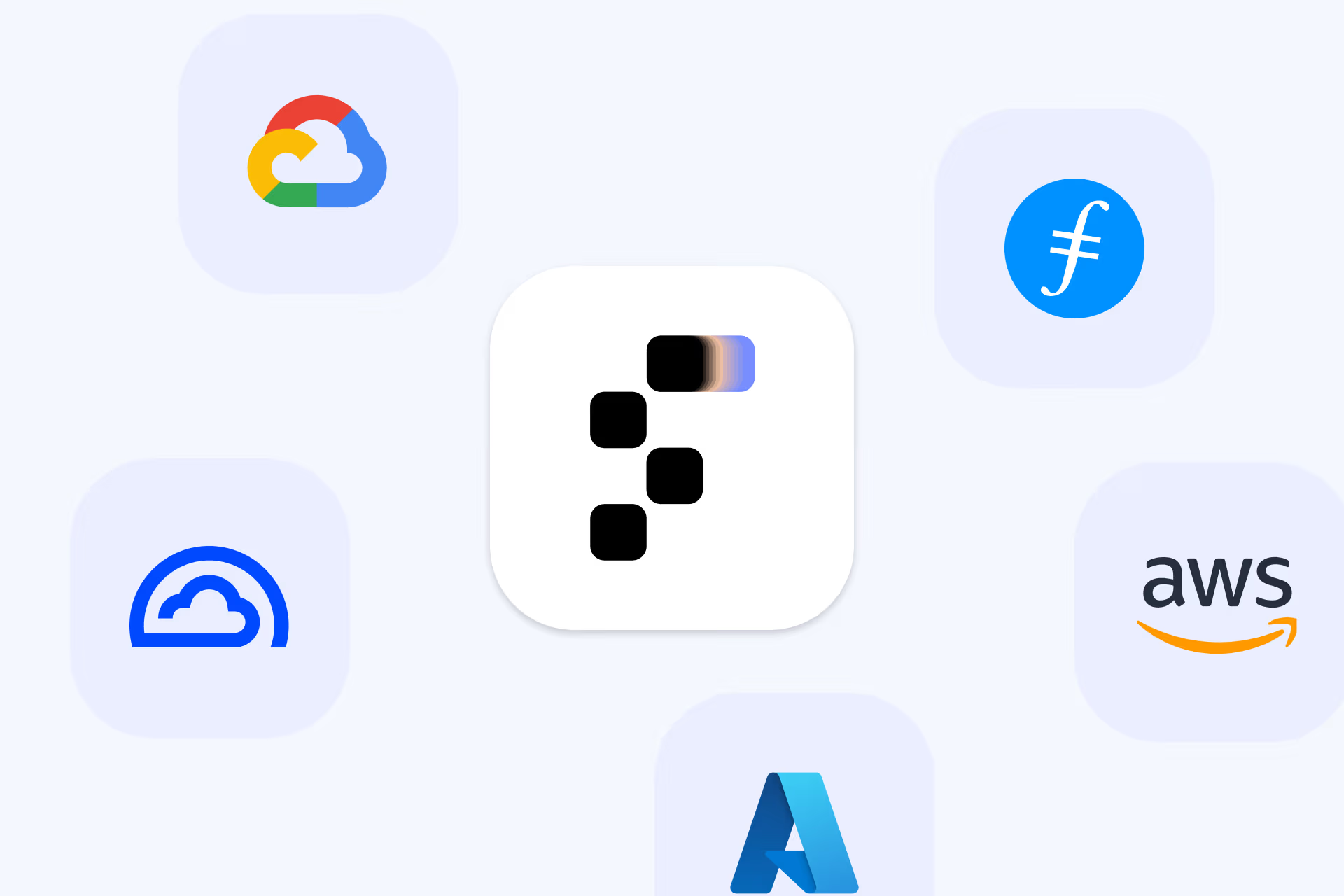Flashback in Context: Mapping the Multi-Cloud & DePIN Landscape

The cloud ecosystem is crowded. Terraform, Anthos, OpenShift, Snowflake, and Filecoin — each promises some version of “multi-cloud.” But they operate at very different layers of responsibility: some deploy infrastructure, others monitor it, and a few abstract data.
Flashback isn’t competing in all those arenas. Its value comes from a different angle: integration. This article maps the landscape so you can see where Flashback sits and why it matters. You can find a detailed description here.
The Layers of Responsibility
At a high level, cloud tooling falls into these categories:
- Deployment → provisioning resources (VMs, clusters, buckets).
- Management → lifecycle ops (start/stop/scale/upgrade).
- Monitoring → metrics, logs, costs, SLOs.
- Integration → how apps/users consume resources (APIs, SDKs, gateways).
- Security & Governance → IAM, policies, compliance.
- Orchestration → scheduling workloads across resources.
- Marketplace/Ecosystem → third-party or decentralized capacity.
Flashback’s sweet spot is integration — making resources usable, not just deployable.
Deployment: Already Solved
The deployment layer is crowded with mature solutions:
- Terraform, Pulumi, Crossplane handle infrastructure as code.
- Anthos, OpenShift, Tanzu unify Kubernetes deployments across clouds.
- AWS, GCP, Azure expose powerful native APIs and templates.
This space is saturated. Flashback doesn’t attempt to become another deployment orchestrator.
Management & Monitoring: Fragmented
Each provider offers its own dashboards and billing, but only within its walled garden. Cross-cloud frameworks add some unification, but mostly for Kubernetes workloads.
The result? Enterprises are juggling multiple consoles and writing glue code just to control usage.
Flashback doesn’t aim to replace monitoring tools, but it centralizes observability for connected resources — giving teams usage stats and, soon, guardrails like quotas and cost visibility that span providers.
Integration: Flashback’s Differentiator
This is where Flashback shines. Developers want to use resources (store objects, migrate workloads, access APIs) without caring if they live in AWS, GCP, Azure, or a DePIN provider.
Flashback provides:
- A neutral, S3-compatible API for object storage (with GCS and Blob support too).
- One endpoint per resource, instead of juggling SDKs and credentials.
- A control plane that translates requests under the hood, so apps never see the complexity.
It’s the same principle that made S3 compatibility the lingua franca of storage, extended beyond a single vendor.
The DePIN Dimension
Filecoin proved that decentralized infrastructure can work at scale, but its UX is siloed. To adopt it, you must integrate with IPFS and manage consensus layers that don’t fit enterprise workflows.
Flashback takes a hybrid approach:
- DePIN providers are treated as just another capacity source.
- The same neutral API applies, with the same guardrails and stats.
- No app-level rewrites are required.
That means enterprises can hedge between hyperscalers and decentralized operators with no friction.
Snowflake vs. Flashback
It’s useful to compare Flashback to Snowflake:
- Snowflake abstracts data analytics across clouds. One SQL interface, many data warehouses.
- Flashback abstracts infrastructure usage across clouds. One API, many providers.
Both are multi-cloud unification stories, but at very different layers. Snowflake makes data queryable; Flashback makes infrastructure consumable.
Positioning Takeaways
- Deployment → dominated by Terraform, Anthos, OpenShift, hyperscaler APIs.
- Management & Monitoring → fragmented and vendor-biased.
- Integration → Flashback’s domain: a single, neutral API with built-in observability.
- DePIN → Flashback uniquely blends decentralized providers with centralized ones in one UX.
- Snowflake analogy → data abstraction vs. infrastructure abstraction.
In short: If Terraform tells you how to build it and Snowflake tells you how to query it, Flashback tells you how to use it — simply, neutrally, everywhere.
The multi-cloud world is here to stay, but most of today’s tools solve deployment or monitoring, not usability. Flashback steps into that gap, giving developers and enterprises a neutral integration layer for storage today — and the rest of the cloud tomorrow.
Follow our journey on Twitter/X, Linkedin, and join the community on Discord or Telegram. The future of the cloud is federated, and we’re building it together.

